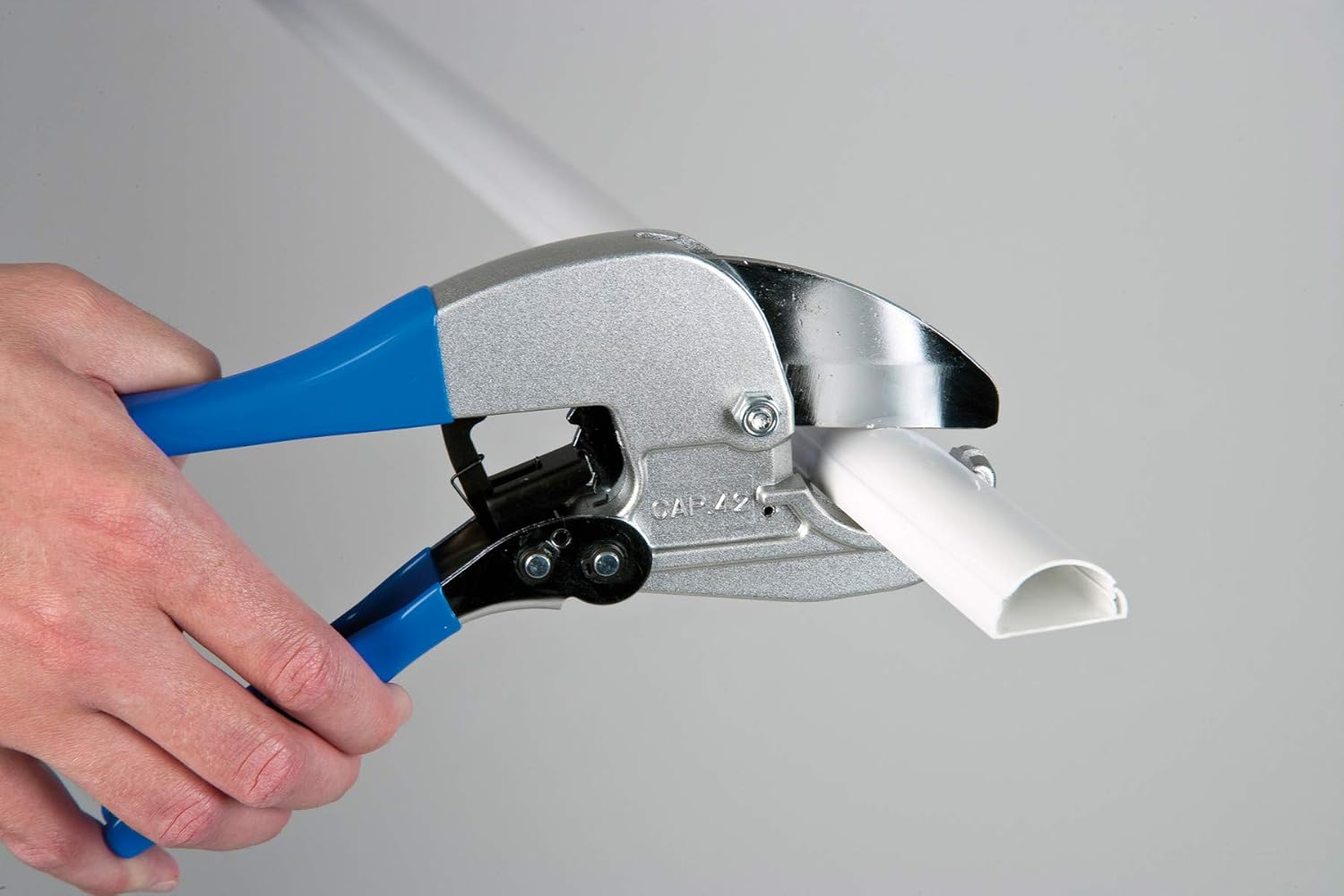About this deal
If you need power for your shed, or any other type of outbuilding, then you’ll need for it to be connected to the mains via an SWA cable. This stands for “steel wire armoured” cable and is ideal for the job as it’s waterproof and not prone to rotting. It can also be positioned underground, keeping your children and pets safe. Many skirting trunking systems are designed for DIY installation. However, for complex projects, it's advisable to seek professional assistance. The cable can be run above ground, so long as it is kept away from anything that may damage the wire. You must also ensure it isn’t a tripping hazard. To achieve this, and stop rodents from destroying the wire, install it at height with cleats. What I would do is use a spreadsheet program like Excel by Microsoft to make up the right formulas. Then you can easily plug in new values when you want. I'll show mine below. Start by measuring the wall length where you intend to install the skirting trunking. Mark the areas where the trunking will be positioned using a pencil.
Skirting trunking, also known as wall skirting trunking, is a type of cable management solution used to conceal and protect cables along the base of walls. It serves a dual purpose, enhancing both aesthetics and functionality. This type of trunking is prevalent in commercial and residential spaces, offering a neat and organized way to route cables without compromising the interior design. You can also choose to go for a larger cable to future proof your electrical connections. For example, adding a heater in the future can massively increase power requirements so it’s good to be prepared. Step 6: How to join armoured cable underground and above ground
How can I run an armoured cable to my shed?
You'll need tools like a measuring tape, pencil, saw, screws, screwdriver, cable clips, and safety equipment. Having the right tools ensures a smooth installation process.
Metal cable conduit trunking and rigid metal conduit are among the most heavy-duty and robust options you can buy. It comes in a range of options for carrying various cables in conduit arrangements, including a wide variety of diameters and cross-sectional areas for different types of cables and sizes of cable (diameters).
Assess your current cable needs and estimate potential future growth. It's better to have some extra capacity to accommodate any expansions. Galvanised steel conduit is often preferred for outdoor and underground cable runs, or in any other places where there’s likely to be a degree of exposure to moisture. Stainless steel trunking is sometimes preferred for aesthetics where a cabling run will be in full view. Aluminium conduit is a great choice for many lightweight applications, such as when wiring needs to be run across ceilings.
I worked with cable tray about 40 years ago and remember I created a couple of simple formulae to work out how much triangular section of the cable tray to cut out to do various sets. I have tried to explain them below. The first one is when you know the angle you want to create and the second is when you want to make a parallel off-set. Absolutely! Many skirting trunking systems are designed to be paintable, ensuring a seamless blend with the surrounding walls. If you’ve excess cable length, use the slots in the base of the lid to loop the cable length in and out of the lid, so not all the excess cable length is in the cavity section! If you haven’t got a cable that’s long enough then you’ll need to join two pieces together. This can be done with a resin jointing kit. However, if you’re asking “how to join armoured cable” then you likely made a mistake with step four. Once you know this, you can work out how large you’ll need your Trunking to be to allow ample space for the cabling.To cut metal Trunking, it’s as simple as having a good metal cutter and an angle to cut along. For most angles you can just draw a line along the corner you want to put in, but for a 45 degree angle you’ll need to do a bit of maths. Well BAS, as I already pointed out, by the time you have made and fixed the spacer, you've done most of the work anyway. So for the sake of a couple of minutes to drill out some holes with a hole saw, and then run the nibblers along the slot - job finished as I've done it. Thanks for the video link. That was most helpful. I've had a go at making a diagram. I made a strip like you and then folded it. When folded the top will run from D to E and the bottom G to C to F to H. The dotted lines show where the strip is folded. Of course, the strip doesn't look like the diagram (as it is straight) but, hopefully, what I've done is how you want to construct your trunking. Conduit cable, which you might also see listed as trunking cable, insulated cables, or armoured cable, refers to a length of wire or cabling intended to be run through a protective plastic or metal sheath. This protective channel is often called wire conduit or cable trunking. It may be rigid or flexible, depending on the needs of the installation. Conduit and trunking are more often used where a raised/wall-mounted, embedded or partly concealed wiring run needs further protection. It also helps to clean up the overall appearance of your wiring as a handy cable management solution. Everyday examples include wiring runs going across ceilings, outdoor cabling, underground cable runs, or wires being chased into and around walls.
 Great Deal
Great Deal 